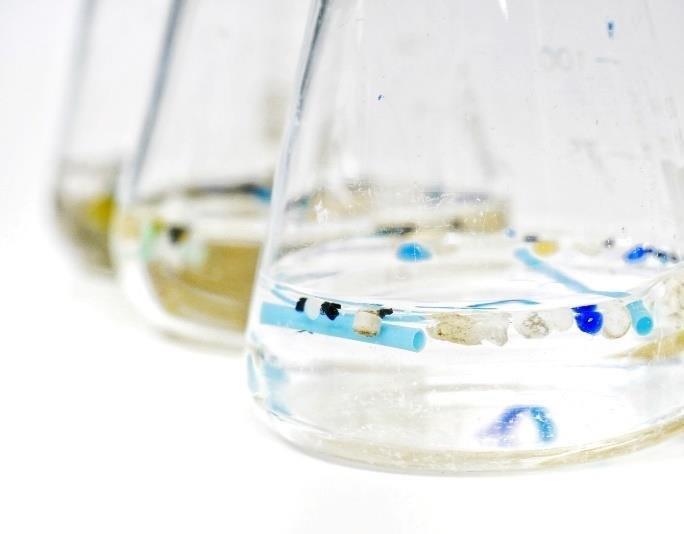TOPTICA eagleyard is developing mobile detection methods for microplastics in water together with further project partners so that quantum photonics can be used for environmental sensor technology in the future.
Currently, purification plants are not yet able to filter microplastics completely which leads to higher risks for the environment and humans. In addition, available measuring instruments are currently too large and too sensive for mobile usage. The SIM-QPla project focusses on analytical methods for treated waste water.
MIR-spectroscopy is currently used for the detection and analytics of microplastic in water. The absorption of light is used in mid infrared by plastic particles to identify and classify small particles – a very complex method that the partners of the SIM-QPla project want to revolutionize.
The new technology needs to be compact and robust to enable the analytic of water samples without complex preparation of the samples in order to detect even small amounts of microplastics. The samples will be measured with photons in mid infrared which leads to improved cleaning stages to ensure less microplastics in water.
TOPTICA eagleyard focuses on the development of hermetically sealed butterfly packages for mobile usage so that the detection of microplastic can be done on site. Moreover, the industrial production will be prepared for the end of the project. Thus, for the hermetical fiber feedthrough, low voltage assembly will be used for the first time. Special submounts as high-performance ceramics will be designed and implemented for effective heat spread. As mobile usage is key, a low power consumption of the thermoelectric cooler is essential while the temperature control needs to be precise.
The project team around Hendrick Thiem, development engineer at TOPTICA eagleyard evaluates different concepts for the collimation of fiber adjustment as the current state of the art cannot fulfill the requirements. In order to integrate the optical isolator in the laser module, a miniature format needs to be developed that fulfills the requirements the analytics. In addition, the electrical control for the pump laser and the sensor module need to be downsized in order to be integrated. As a later roll-out is essential, new manufacturing processes for the highly integrated micro-assembly will be defined.
At the end of this project, laser modules for quantum sensor technology will be available for industry usage. The developed method of detection will decrease costs significantly. SIM-QPla has a project volume of more than 2.7 million Euro for three years and is supported by 77.2% by the ministry of research and education. Further partners of this project are the Ferdinand Braun Institut, die Westphalia Datalab GmbH, die Humboldt Universität zu Berlin, die Westfälische Wilhelms-Universität Münster and the WESSLING GmbH.
TOPTICA eagleyard’s‘ core competence is the development, production and sale of innovative high-power laser diodes based on GaAs (Gallium Arsenide). Its portfolio contains laser diodes with wavelengths ranging from 630 nm to 1120 nm sorted in five product families: Single Mode Laser Diodes, Single Frequency Laser Diodes, Multimode Laser Diodes, Tapered Amplifiers and Gain Chips. These laser diodes are addressing a variety of applications such as space, aerospace and defense, metrology, spectroscopy, medical instrumentation, test & measurement and material analysis. The company started as a rapidly growing spin-off from the Ferdinand-Braun Institut in 2002 and is part of the Munich-based TOPTICA Group since 2013.
For more information, please visit our website: https://www.toptica-eagleyard.com
eagleyard Photonics GmbH
Rudower Chaussee 29
12489 Berlin
Telefon: +49 (30) 63924520
Telefax: +49 (30) 63924529
http://www.toptica-eagleyard.com
Marketing
Telefon: +49 (30) 6392-4561
E-Mail: stephanie.hannibal@toptica-eagleyard.com
![]()

